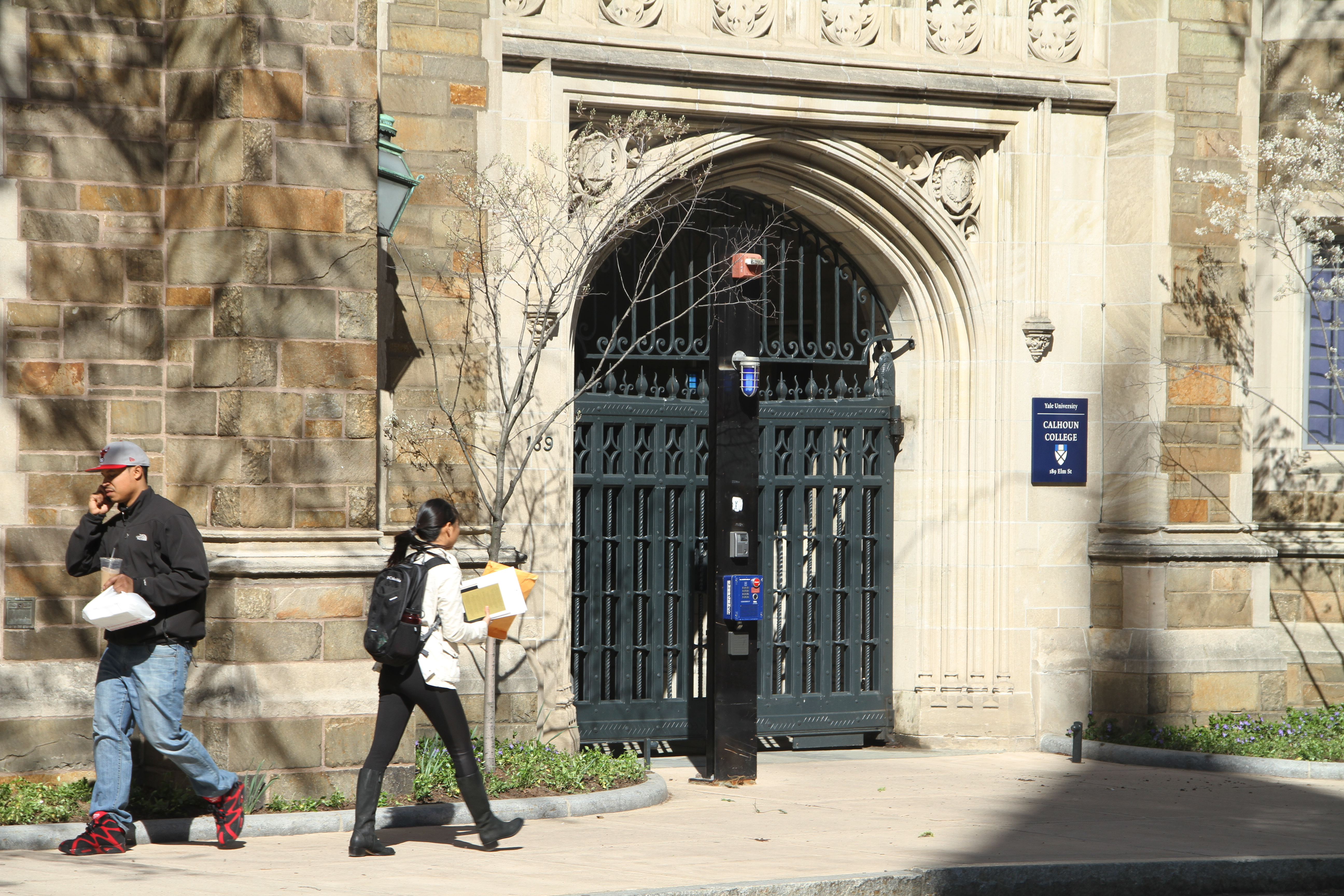
The University committee tasked with reviewing the artwork on display at Yale will soon begin evaluating proposals to add new stained-glass panels to Calhoun College, where this past summer an African-American dining hall worker smashed a slavery-themed window in the dining hall.
As the dust settles on months of racially charged debate, the Committee on Art in Public Spaces — which was created in April by University President Peter Salovey in the wake of protests about racism on campus — announced Friday that a subcommittee advised by Yale College Dean Jonathan Holloway will seek artists to design new artwork for Calhoun. The email, which offered little specific information, also stated that the committee hopes to acquire “significant pieces” of contemporary Native American art and to display more portraits of women leaders at Yale.
“We anticipate that the art recommended for commission will take the form of glass to be displayed in the windows of Calhoun College,” the email said. “We will be soliciting ideas for artists from inside and outside the Yale community.”
The email did not specify whether the artwork would replace the clear window installed as a placeholder after the dining hall worker smashed the stained glass in June.
“Whether the commissioned artist will use parts or sections of the existing windows is not known, as that will depend on the accepted proposal,” Committee Co-Chair and art professor Martin Kersels wrote in an email to the News. He did not address the Native American artwork and the plans for paintings of women leaders. Student activists last year demanded the construction of a Native American monument on Cross Campus.
Senior Advisor to the President Martha Highsmith, the committee’s other co-chair, did not respond to requests for comment.
Head of Calhoun College Julia Adams, who will serve on the Calhoun subcommittee, told the News that at the moment, the group has no deadline, and she does not know when it will begin to meet.
“The scope of the project could be quite variable, depending in part on what artists propose, the aesthetic visions and so forth,” she added.
Last year, as racially charged protests shook campus for months, the debate over the naming of Calhoun eventually grew to encompass the art on display in the college. In January, Adams took down a portrait of Calhoun that had hung in the dining hall for decades.
And in June, Corey Menafee, an African-American dining hall worker in Calhoun, used the handle of a broomstick to smash a stained-glass window in the dining hall that depicted slaves carrying bales of cotton. A couple of weeks after the window was broken, the Committee on Art in Public Spaces had stained glass that depicted the life of John C. Calhoun removed from the college common room.
Austin Strayhorn ’19, who is in Calhoun and participated vocally in last year’s protests, told the News that the new window panels should assert the “principle of true liberty and justice for all.”
“Whatever is chosen should make a statement that looks to the past and denounces what was previously symbolized,” he said, listing slavery and human rights abuses as the primary themes of the old artwork.







